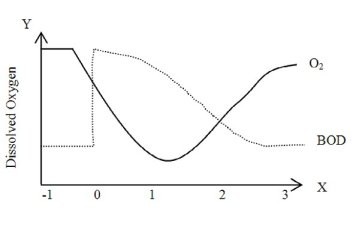How do porosity and permeability change with depth below the surface? Which Earth materials have the highest porosity and permeability? The lowest?
What will be an ideal response?
Porosity and permeability tend to increase with depth into the Earth, as compaction reduces pore space and cements fill space. Crystalline rocks don't have pore space—they are fractured, and fracturing is most common in the upper crust. Limestone and sandstone and unconsolidated sediments have high porosity; shale has low porosity.
You might also like to view...
 In the diagram, which of the following organisms would probably be found in the area between 1 and 2?
In the diagram, which of the following organisms would probably be found in the area between 1 and 2?
A. Trout, sludge worms, and mosquito larvae B. Mosquito larvae C. Gar, blackfly, and midge larvae D. Mayfly and stonefly larvae E. Bullhead catfish and gar
One-fifth of Earth's total freshwater supply is in ________
A) groundwater B) estuaries C) ponds D) the ocean E) the tundra
Match the volcanic hazard with its definition
A) Substances like CO2, SO2, Cl, and F that can result in climate change and be hazardous to human health B) Large volumes of ash precipitating from eruption cloud C) Fluid mudflow of volcanic debris D) Hot, fast-moving body of expanding gas and ash that hugs the flanks of the volcano E) Destructive sea wave triggered by powerful explosions or landslides into large bodies of water 1) Pyroclastic flow 2) Lahar 3) Tsunami 4) Ash Falls 5) Volcanic Gases
In deserts, wind can be said to ________
A) be absent B) make many of the landforms C) be more effective than elsewhere D) create basin-and-range topography E) be the strongest on Earth